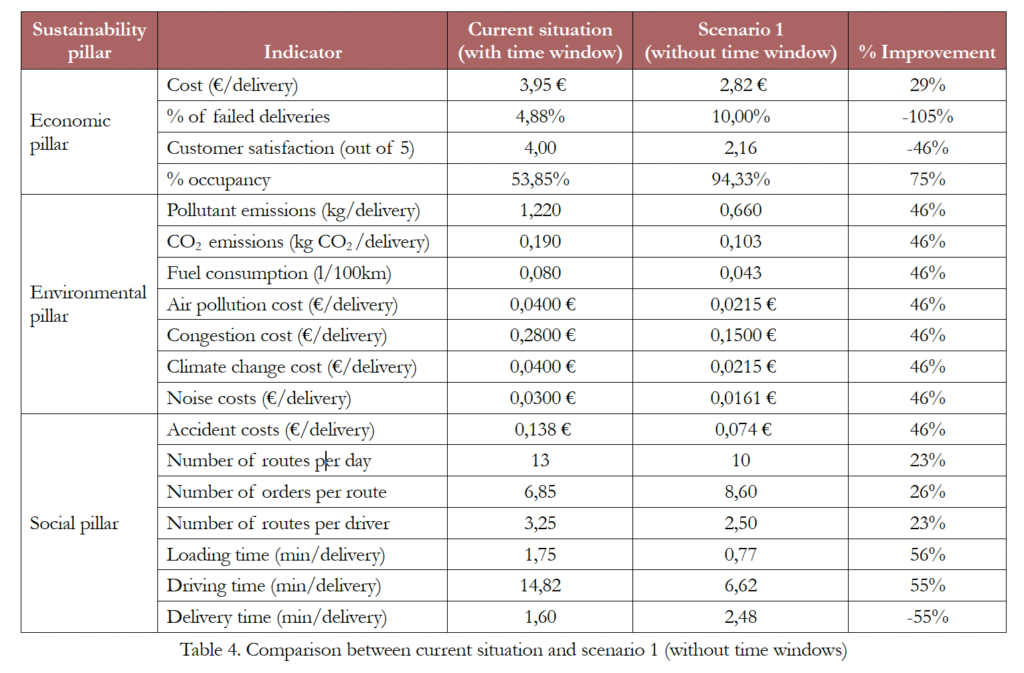To enhance customer satisfaction, e-retailers have prioritized last-mile e-grocery delivery services that incorporate time windows. However, the sustainability challenges associated with this approach necessitate an evaluation of its impact. A recent article aims to define a method for assessing the sustainability effects of time windows and apply it to a specific case study. Through desk research, the study identifies and formulates a method based on a scoreboard.
A case study is conducted to assess the applicability of this approach and analyze the impact of time windows on sustainability. The selected case study is a leading e-grocer in the Spanish market. This e-grocer has a network of 270 supermarkets, where online orders are prepared and shipped from.
The research establishes and implements a method to evaluate time windows’ effects across the three pillars of sustainability—environmental, social, and economic. Findings indicate that time windows negatively impact last-mile sustainability, particularly in environmental and social aspects. The economic impact is less clear, as time windows increase delivery costs and reduce vehicle utilization but improve service levels and customer satisfaction. Intermediate alternatives can help retain the benefits of eliminating time windows while minimizing service-level disruptions.

From an economic perspective, eliminating time windows has a mixed impact. On the positive side, delivery costs decrease by 29% due to increased route flexibility, enabling more efficient deliveries. Additionally, vehicle occupancy rates improve significantly by 75% as e-grocers can optimize route organization and dispatch fully loaded vehicles. However, the downside is a 46% decline in customer satisfaction and a 105% increase in failed deliveries. Without time windows, customers are not provided with alternative slots that align with their availability, leading to uncertain delivery timing and a higher likelihood of missed deliveries.
From a social standpoint, time windows have both positive and negative effects. While they increase the number of routes assigned per driver—resulting in higher workloads—they also improve the number of deliveries per route, which can help balance the workload.
Overall, eliminating time windows significantly enhances sustainability across all three pillars. However, time windows provide key advantages, particularly in customer experience, that are compromised by their removal. Without time windows, e-grocers lose a crucial factor that allows customers greater control over their orders, ultimately reducing satisfaction. To address this challenge, the following sections explore two alternative scenarios to strike a better balance between customer satisfaction and sustainability. The current situation was also compared with scenario two: using two time windows. A third scenario was analyzed in which the three 2-hour time windows most demanded by customers were enabled.
Retailers can use these insights to develop sustainable last-mile strategies, determining whether time windows are necessary and viable. Unlike previous studies, this research integrates all three sustainability pillars, concluding that a limited-time window system based on historical data may offer the most balanced and sustainable solution.
Source: GONZÁLEZ-ROMERO, Iria; BASTERO-SELLÁN, Juan; PRADO-PRADO, J. Carlos. Assessing the impact of time windows on last-mile sustainability: A scoreboard-based approach and case study analysis. Journal of Industrial Engineering and Management, [S.l.], v. 18, n. 1, p. 100-114, feb. 2025. ISSN 2013-0953. Available at: <http://jiem.org/index.php/jiem/article/view/8575>.
